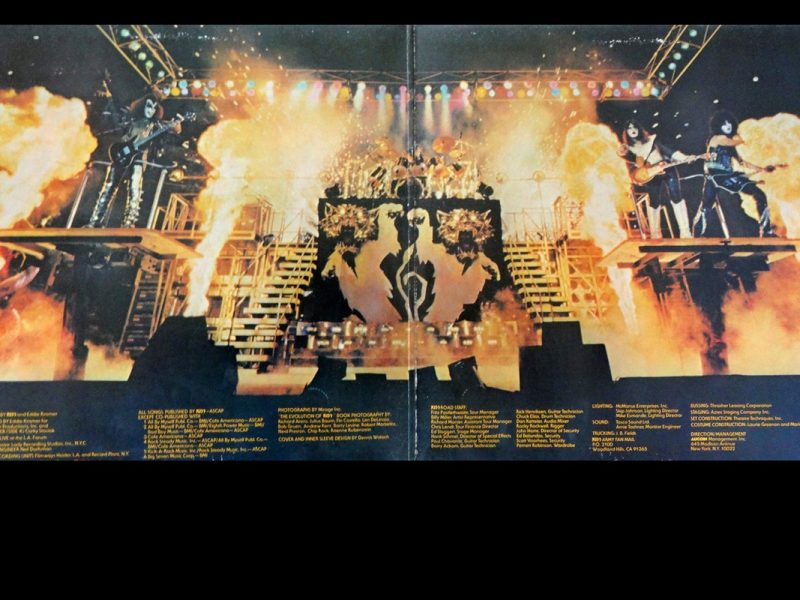Starship launched the next phase of their career in 1985 with the release of “We Built This City,” the first single from their album Knee Deep in the Hoopla.
The band that began as Jefferson Airplane in 1965 in San Francisco had moved through a lot of changes, evolving into Jefferson Starship in the early ‘70s after a series of lineup shuffles. They would continue to work under that banner until 1984 when founding member Paul Kantner decided to depart following the release of Nuclear Furniture album.
There had been a lot of internal conflict leading up to that point, with Kantner and the rest of the group quarreling over the musical direction for the album. He was particularly unhappy with the news, delivered by vocalist Mickey Thomas, that one of his songs would be left off. He and the members of the band continued to disagree so eventually he put in his notice.
READ MORE: How Jefferson Airplane Eventually Became Starship
Kantner would not depart quietly: He took legal action to ensure that the band would not continue to use the Jefferson Starship name. As a result, by the time they released Knee Deep in the Hoopla about a year and a half later, they would be known simply as Starship.
As an opening statement, “We Built This City” was defiantly confident and one that came from an interesting place. The song was worked on in its early stages by Elton John lyricist Bernie Taupin, who collaborated with Martin Page. These same writing sessions also produced “These Dreams,” later a monster hit for Heart.
Watch Starship’s ‘We Built This City’ Video
Original ‘We Built This City’ Demo was ‘Very Dark’
Their original pass “was a very dark kind of mid-tempo song, and it didn’t have all this ‘We built this city!’ It had none of that,” Taupin told Rolling Stone in 2013. “It was a very dark song about how club life in L.A. was being killed off and live acts had no place to go. It was a very specific thing. A guy called Peter Wolf – not J. Geils [Band] Peter Wolf, but a big-time pop guy and German record producer – got ahold of the demo and totally changed it. He jerry-rigged it into the pop hit it was. If you heard the original demo, you wouldn’t even recognize the song.”
Page offered additional details about the early version of “We Built This City,” telling Songfacts in 2014 that “the demo was very different from the way Starship actually recorded the record. My demo is much darker, more of a ‘Shock the Monkey’ Peter Gabriel vibe. I’d even recorded from the radio a police report of a riot going down in L.A., which they turned into a [San Francisco-based] DJ.” The voice was provided by MTV executive Les Garland, who had been a radio personality and programmer in a number of markets, including San Francisco.
“I saw the words as almost like a rebellion lyric: it was like live music has been taken away from the city,” Page added. “So my demo, it was a little more edgy. And I’m very pleased with what Starship did with it, because they made it a universally appealing song.”
In keeping with the times, the finished track was driven by layers of synthesizers and programming, with upbeat vocals from Thomas and Grace Slick – the lone remaining member from the Jefferson Airplane days. “We Built This City” proved to be an instant earworm for radio listeners beginning in the late summer of 1985, and the single became Starship’s first No. 1 on the Billboard Hot 100 on Nov. 16, 1985. Knee Deep in the Hoopla album eventually peaked at No. 7 on the Billboard 200. The track then received a Grammy nomination for Best Rock Vocal Performance by a Duo or Group.
Listen to Starship’s ‘We Built This City’ In Concert
Critics Begin to Turn on ‘We Built This City’
Starship would continue to bank additional hit singles, including a second No. 1 for the Knee Deep in the Hoopla album with the power ballad “Sara” in 1986. With the passage of time, however, “We Built This City” became a polarizing topic of discussion.
Blender put the track in the top spot of their 2004 list of the Top 50 Worst Songs Ever. Editor Craig Marks said the single “seems to inspire the most virulent feelings of outrage. It purports to be anti-commercial but reeks of ’80s corporate-rock commercialism. It’s a real reflection of what practically killed rock music in the ‘80s.”
Similarly, “We Built This City” landed at the top spot again in 2011 on Rolling Stone’s reader’s poll list of the 10 Worst Songs of the ‘80s. “This could be the biggest blow-out victory in the history of the Rolling Stone readers poll,” the magazine noted. “You really, really, really hate ‘We Built This City’ by Starship. It crushed the competition.”
READ MORE: Jefferson Starship Reaches an Arena-Rock Zenith With ‘Modern Times’
What is it about “We Built This City” that began to rub folks the wrong way? Mickey Thomas told UCR that he has a theory: “I think there’s a couple of factors involved in that. One, the overriding factor was when a lot of people didn’t care for the direction that rock music was taking in the ‘80s as far as recording techniques, processes and the sounds,” Thomas said. “A lot of rock ‘n’ roll bands were sort of catering more towards contemporary hits radio.”
Then there was their roots back to the Woodstock era. “I think for a band like Starship, that was even taken to another level, because the standards were so different for a band that emerged out of the ‘60s from Jefferson Airplane,” Thomas added. “So people had a tendency to really romanticize that era and the whole counter-cultural and underground aspect of music in the ‘60s.
Listen to Starship’s Reissue of ‘We Built This City’ Without Grace Slick
Starship Makes No Apologies for ‘We Built This City’
For some people, Starship “was an even bigger sellout than say Journey, Whitesnake or some other band like that, because of the history of the band,” Thomas argued. “I think as I’ve said before that ‘We Built This City’ just kind of became the poster child of a whole trend of music that a lot of people didn’t care for, whether they were wrong or right. And then came Blender magazine, which put the stamp of approval on that whole concept,” Thomas added, with a chuckle.
“I understand it, but would I take it back? The first No. 1 single in the history of the band? That was an exciting time for us,” he said. “We were digging that – and the song, we accomplished exactly what we set out to accomplish. We thought, ‘We’re going to reinvent the band. This is the sound we’re going for, and we’re going to use all of these new modern machines, techniques and recording processes and sounds to our advantage and have fun with it.’ It was like a whole new palette of colors to work with. So that’s what we set out to do and we did it!”
Slick later split with Starship, and ended up taking a shot or two at the song. But Thomas remained a staunch defender, saying its lyrics weren’t meant to be taken literally.
He felt that Taupin’s use of the word “city” was “an allegory for any collection of people anywhere who came together to express themselves through the power of music. … It was both a celebration of rock ‘n’ roll and a protest against those who try and tame it. I never for a moment thought that anyone would think that I was actually singing about concrete and steel or bricks and mortar. … The ‘we’ in the lyric to me always signified a collective we: the artist and the audience singing together as one.”
Either way, Starship fans continue to sing along, despite what critics may think. And the best part is that nobody has to revisit their own questionable ‘80s fashion choices.
Rock’s Most Disappointing Albums
A band’s most disappointing album, as this list shows, isn’t always a band’s worst record.
Gallery Credit: Nick DeRiso
They Hated Their Own Albums



